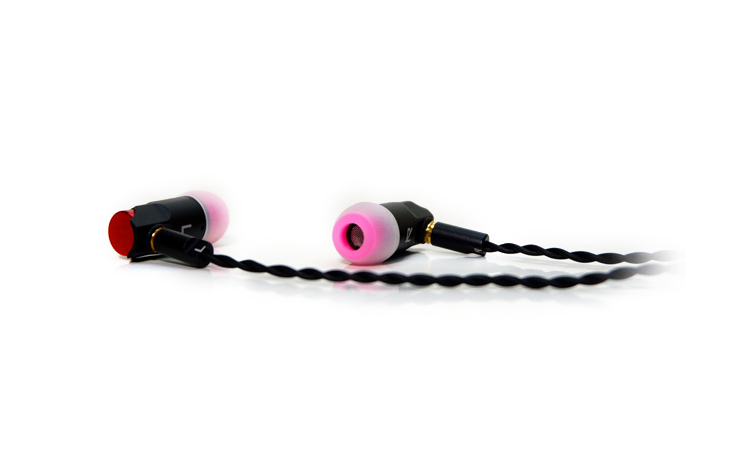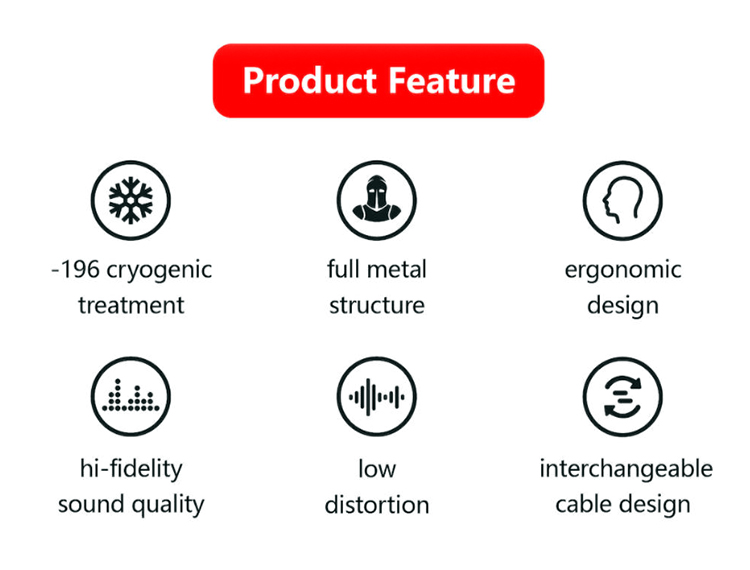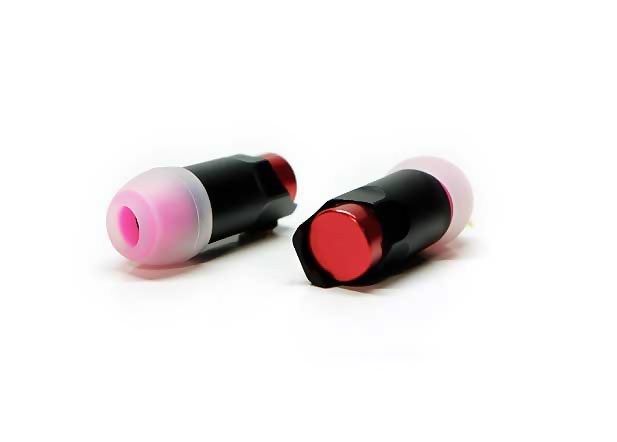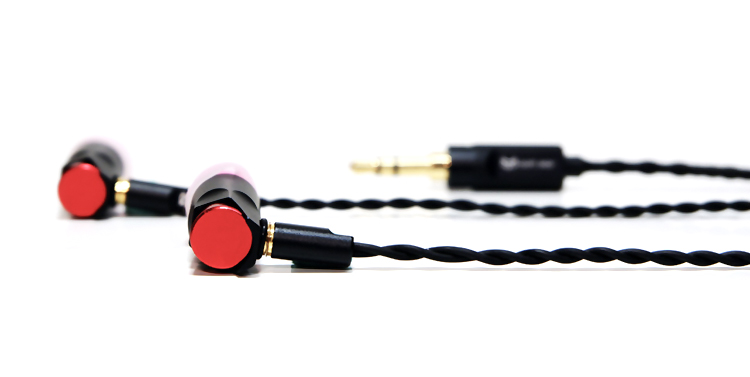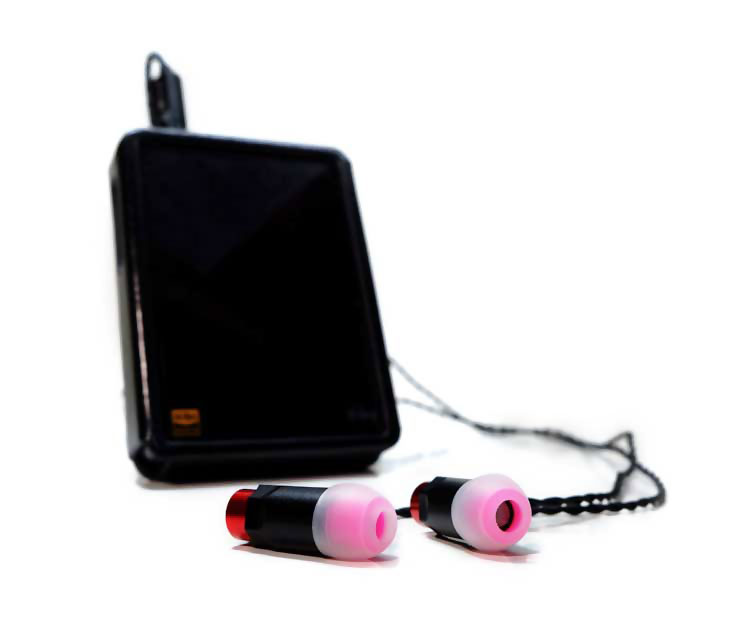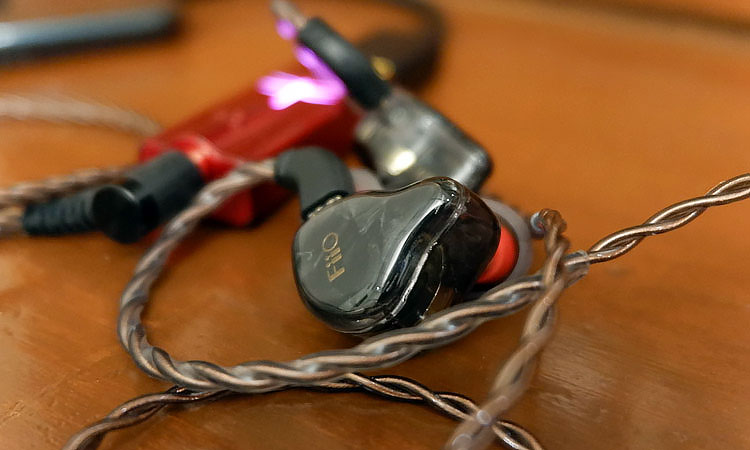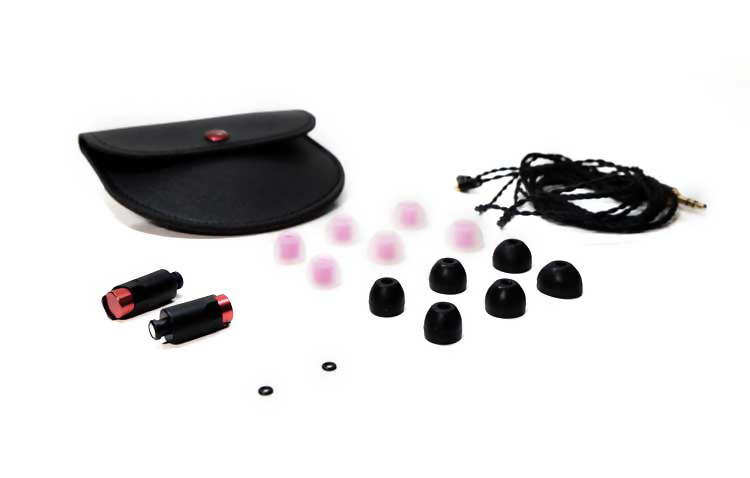The Cat Ear Mia is a debut entry-level 8mm PET single diaphragm, dynamic driver, universal bullet design IEM. It is currently priced at $99.99.
Disclaimer: The Cat Ear Mia sent to us is a sample in exchange for our honest opinion. We thank HiFiGo & Cat Ear Audio for this opportunity.
To learn more about HiFiGo reviews on Headfonics you can click here.
Note, this review follows our new scoring guidelines for 2020 which you can read up on here.
When I was doing research on Cat Ear Audio, I found that they were only established in 2019, no wonder I’ve never heard of them until today. However, the mother company, Sunshi has been around since 2007, and they have been involved in manufacturing high-end audio and power cables.
They have done extensive R&D on cryogenic treatments on cables, and how it improves the delivery of the audio signal. They have since also produced some earbuds under the ShoonTH brand.
Later on, they decided to create a dedicated brand for IEMs called Cat Ears Audio. They have quite a few products in their pipeline, but the first one that they came out with is the Mia, 1 letter short for Miao?
It will be interesting to see how their background in cables and previous experience with earbuds would come into play with their first foray into the IEM market.
Technology Inside
The Mia is a single 8mm dynamic driver universal IEM with a few unique attributes. This is the first IEM that has gone through a -196 cryogenic treatment, similar to how Sunshi has been treating its cables for years. Cryogenic treatment of audio cables and conductors are said to align the molecular structure of the copper, which in turn improves sound quality.
Aside from the interesting effects of cryogenics on the entire body, the Mia also features a tuning ring that can be attached to the vents at the MMCX connectors. This is being pitched as being able to improve the staging performance of the driver.
Design
Unlike many IEMs today, the Mia does not come with an ear loop design, instead Cat Ear Audio decided to go with a more traditional straight down design.
The shell is just a black anodized aluminum cylindrical tube with some red accents at the tips, making it seem like a pair of cat ears when worn. The anodizing treatment of the shells makes me feel at ease that the finish will last quite a while.
The cables are terminated with MMCX connectors at the end that goes into the shells and has a standard 3.5mm TRS connection on the other end.
The MMCX connection needs to be disconnected before the rubber tuning filters can be attached to the shells. I found that it was a bit difficult to remove the MMCX connection, so a bit of effort might be needed to remove the rubber tuning rings.
The cables are braided cables, coated in a black plastic coating. Storing the cables might need at least a cable organizer or a slightly larger case because stuffing them inside the included leather pouch would tangle them up like spaghetti.
The cable is nicely built with tight braiding, low microphonics, and a pliant handling quality so I’m not too worried about the long term viability though you can roll easily enough with alternatives that do not have memory loops.
Comfort & Isolation
One of the biggest advantages of having IEMs with a wire that goes straight down from the shells is the lack of contact with your ear’s concha basin. The cylindrical form factor of the Mia ensures that the Mia will never hit your earlobes or press unnaturally on any ridges.
However, with a slightly larger nozzle, I worry that there might be some comfort issues if your ear canal is narrower. In my case, the nozzle was almost touching the walls of my ear canal, but it still wasn’t too much of an issue. Despite the weight of the shells, they do stay inside my ears reasonably well.
As with most IEMs, the Mia isolates well from outside noise as long as they are given the chance to fit into my ears properly.
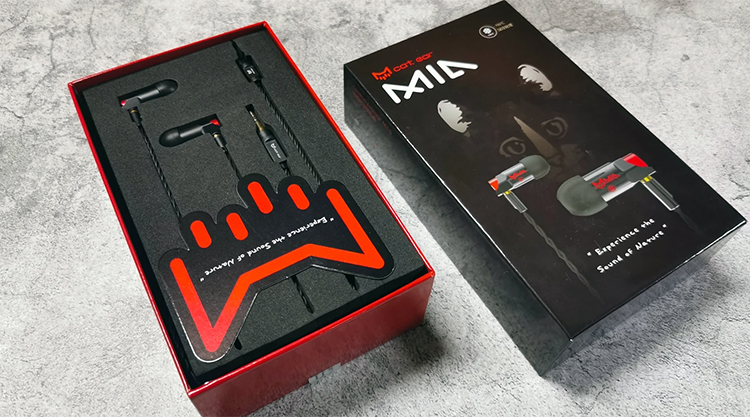
Packaging & Accessories
The retail packaging is a bit more colorful than what you would typically expect from other audiophile offerings. The box is glossy and has a picture of a cat and the IEMs on the front.
Opening the box reveals the IEM’s themselves, arranged in a foam insert that keeps them from moving around while shipping. Underneath the foam insert is a box that contains the accessories.
The Mia comes with quite a few accessories inside. This includes a soft leather pouch, 2 types of ear tips that come in 3 sizes, and the tuning rings. I do like how the stock silicone single bore tips that come with the Mia have stiff stems. They seem to be of good enough quality that aftermarket tips won’t be a necessity with the Mia unless you have a specific tuning preference.
Sound Impressions
Bass
One of the first things that I didn’t like too much is the amount of bass that it has. I found the bass to be tilted a bit too high for my tastes, and I ended up having to change ear tips to tame it down a bit. When I changed ear tips, the bass became the beast that it could be.
I found the bass to be quite generous, but well controlled. The sub-bass region had rumble, intensity, and a strong sense of ambiance. The sub-bass that came from the Mia almost feels atmospheric which is impressive for a budget-priced dynamic driver.
The midbass still quite elevated, not exaggerated, but I’m sure that the bass quantity would satisfy the appetite of any bass head.
However, when I listened to drum hits I found that the Mia was not able to present the transients of drum hits. Each drum hit seemed to linger for a bit too long making drum hits a bit muffled, taking away the snappiness of drum hits. Although the bass quantity on the Mia is generous, I would have wanted to hear better drum transients from the Mia.
Midrange
Male vocals on the Mia are a little recessed with detail struggling to shine through as result. When I listened for texture in the voices of crooners such as Michael Buble, it sometimes felt a tad glossed over. I also found that the male vocal range slightly thinner than I expected it to be.
Female vocals though are a different story. The female vocal range seems to be slightly elevated, and a bit more textured compared to how male vocals sound.
While the midrange plays fairly well when there’s just one instrument playing, I found the Mia to fall short when multiple instruments are being played at the same time. The cellos on the Piano Guys’ The Cello Song sound a bit mushed together in some parts of the song. I would have wanted to hear a unique timbre to each instrument in the recording.
Guitar plucks are prominent and well defined. Guitar plucks are believable even the decays sound natural and snappy, I can even hear how the guitarist is shifting his fingers on the fretboard of his guitar. Upper midrange detail on the Mia is detailed and natural.
When harmonics are being played on the guitar though, I found that they are not as natural as I expected them to be.
Treble
Whistles are generally hard to reproduce, but when I listened to Isn’t She Lovely by Livingston Taylor, I found that the whistles at the start of the track felt quite natural. With the detailed treble presentation of the Mia, I found myself being able to imagine the shape of the mouth of the singer that is whistling.
The upper treble range is also well extended being able to present transient decays well. Details in the upper treble range were prominent where chimes and cymbals are believable.
Overall, I found the treble on the Mia to be enjoyable as it’s generally detailed but never ends up screaming into your ears.
Staging
One of the main points that I found in the marketing material of the Mia is that the cryogenic treatment extends the soundstage quite wide. And they are not kidding!
I found that the Mia can present soundstage quite well and extends well beyond the edges of my head. For a pair of IEMs, I found that there are sound elements that are at least 2 inches away from my head. Quite an achievement in my humble opinion.
I also found that the Mia can present a coherent center image, and it’s substantially in front to make it feel natural.
There is a bit of depth in the soundstage also. However, when I listened to tracks that have precise placement of sound elements, like Bubbles by Yosi Horikawa the Mia can only present a general direction of where each of the balls falls, but I’ve heard more precise placement on other IEMs.
Synergy
The Mia has a sensitivity of 105dB/mW, with an impedance of 16Ω. This translates to being a comfortably driven IEM by most phones (with jacks or dongles) to even the loudest listening levels.
These specs don’t tell the whole story though, since the Mia can be very detailed. Plugging the Mia into my Hiby R3 Pro, I was able to hear a marked improvement in clarity, instrument separation, and staging.
Tip Rolling
The black ear tips were attached out of the box and sounded bloated with a darker character. I then tried different ear tips from my box of ear tips that include Spiral Dots, Final Type E, and SpinFits but I ended up preferring the stock alternative pink ear tips.
I found the larger bore pink ear tips that came with the Mia to have a more controlled and neutral tonality. It simply made the Mia sound more accurate. I like how Cat Ear Audio took the time to put the most appropriate ear tips in the box of the Mia, which means I’m good to go right out of the box.
Tuning ring
Also included in the package are these tiny rubber bands in a zip lock bag. They look to me like rubber bands that are used for braces but they’re actually ones that are used for tuning.
I wanted to try them out, but I found that there’s also a pair of them already attached to the shells. So I tried to remove the rubber bands that cover the vents and found that the Mia sounded quite a bit more closed in while elevating the bass considerably.
Reattaching the rubber band into the vent holes was a bit hard, but when I plugged them back in I was happy to hear a more neutral sound signature and a more expansive sound stage.
Select Comparisons
FiiO FD1
$59.99
Technical
The first thing that I noticed when I opened the box of the Cat Ear Mia is that the accessories that came with the Mia are quite simple. Especially when you compare it to what comes along with the FiiO FD1.
The FD1 comes with a hard-shell clear carrying case, and 3 types of ear tips. Glaringly absent from the Mia are the foam tips that come with the FD1 but I don’t believe that the ear tips that come with the Mia are lacking as the included tips are perhaps the best fit for me.
The form factor of the 2 IEMs are also quite different as the Mia goes straight down from your ears while the FD1 has an ergonomic ear hook design.
What I like about the Mia’s design though is that it is connected via MMCX connectors instead of the 0.78mm connectors that the FD1 comes with. I found that the Mia’s cables were a bit harder to remove though, so I think there are pros and cons to how both IEMs are built.
Performance
Sonically, I found that the FD1 has a fuller and warmer midrange overall. The Mia however has better sub-bass extension, mid-bass elevation, and dynamic impact is about equal on both IEMs though. Treble on the Mia seems slightly more extended and ends up a hair more detailed comparatively.
What impressed me most about the Mia is its staging capability. Comparatively, the FD1 sounds more narrow. Both IEMs can create a coherent center image, however, I found that the Mia can create more tangible sound elements in the rest of the sound stage in between the center image and the extreme left and right.
While the accessory package that came with the Mia might seem a little sparse compared to what comes with the FiiO FD1, the Mia sounds like a more refined product compared to the FD1.
Tonality on both IEMs are quite different, but both can present a pleasurable sound experience. It just boils down to if you are willing to give up the Mia’s more expansive soundstage and more precise imaging for the FD1’s more mid centric presentation.
Rock It Sounds R-50
$119.99
Technical
When compared to the Mia, the R-50 doesn’t come with much at all in the box. The R-50 comes in a plain cardboard box, a semi-hard shell clamshell case, and just 2 pairs of ear tips in different sizes lacking the Mia leather pouch and 2 sets of extra ear tips.
The R-50 is an ear hook design with a non-removable cable. Both are quite comfortable, but I found that the R-50 needs to have a deeper insertion compared to the Mia.
The Mia is a bit more comfortable for me because it doesn’t necessitate the need to insert the IEMs very deep into my ears for it to sound optimal. With the R-50 the fit is everything while the Mia seems to be slightly less picky.
Performance
I tend to find that dynamic drivers present the bass and lower midrange more naturally compared to balanced armature drivers. And this stereotype has not been broken when I compared these two.
The Mia sounds a bit more impactful compared to the R-50 shorter bass decay which felt a bit unnatural. On the other hand, the Mia bass decay was a bit too long to feel the immediacy of drum impacts.
The lower midrange on the R-50 sounded a bit more textured and detailed while both IEMs have the same amount of competence in presenting the upper midrange. Treble on the R-50 sounded more crystalline though and detailed while the Mia sounded airier in comparison.
Staging is a bit more apparent with the Mia as it presents a slightly wider soundstage of the 2. Imaging on the other hand is a different story, as the R-50 can conjure up pinpoint imaging compared to the hazier image that gives you a good idea about the general direction of the source when listening through the Mia.
The R-50 transcends some of the limitations of a pure BA design, but the Mia still ends up sounding more natural overall. The R-50 certainly has a more detailed presentation but I find myself going back to the Mia for the more comfortable fit, and the much wider soundstage.
Our Verdict
While I would have expected a bit more inside the retail package, I’m impressed with how wide a soundstage that it creates despite having a good amount of bass. However, the tuning of the Mia is quite interesting, and I can understand why it would be an ideal tuning for certain genres of music.
I would have wanted the drivers to have a slightly more immediate bass impact, but overall detail retrieval, imaging, and soundstage are quite impressive for the price point.
Cat Ear Mia Specifications
- Driver: φ8mm Dynamic Driver
- Frequency Range: 16-22,000Hz
- Impedance: 16Ω±15%
- Sensitivity:105dB/mW
- Distortion:<1%
- Plug:3.5mm stereo,golde-plated
- Type:Closed,In-ear
- Earphone material: Aluminium Sandblasting
- Cable material: OFC silver-plated, -196℃Cryogenic treatment
- Cable length: ≈1.2m

